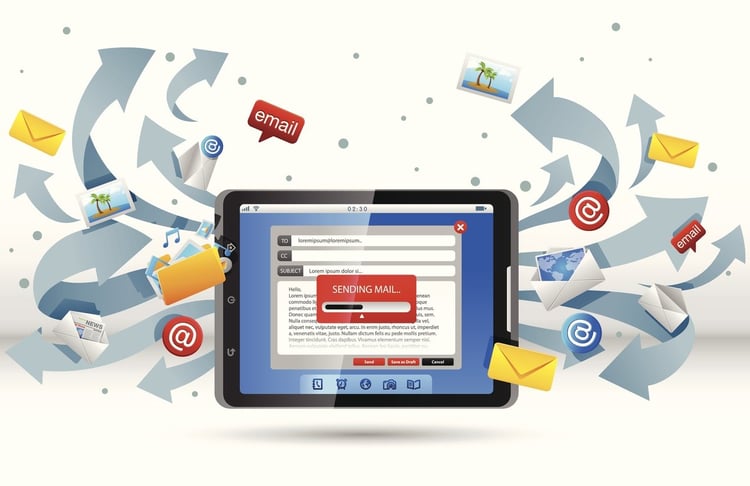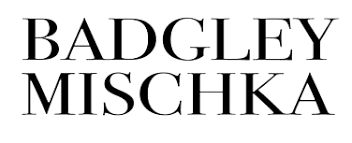
In his 2002 song “Darkness,” Peter Gabriel states “I have my fears / But they do not have me.” Email is the best and worst thing to happen to business in the last 25 years. Best because it’s simple, fast, free, and accessible instantly from just about anywhere on the planet. Alternatively, because it is so simple, fast, and free, it’s also become so overly abused, which is why it’s also the worst (let’s all remember that for hundreds of years before 1996, businesses ran just fine without email).
For too long, email controlled my life – with dozens of folders overflowing with messages, dings and buzzes interrupting just about everything I did, and lengthy threads involving too many recipients and replies. While Outlook was not my employer (as far as I knew, I had never received a paycheck from Microsoft), it was the focus of most of my days in the office, and when I was out of the office, whichever PDA/smartphone I was carrying that year would fill in until the next morning.
My email had me, I did not have email.
It wasn’t until 2011 that I decided to take back my life and tame my email. Of the many solutions that I tried over the years, here are the three which I found most effective:
Silence!
It used to be that if I was at my desk, each email would cause the following events: ding from computer speakers, preview of email in lower right corner of screen, envelope icon in system tray, different ding from smartphone (usually a few seconds before/after the ding from the computer, but sometimes strangely at the same moment), vibration from smartphone, and a preview of email on smartphone screen.
Wow – that’s six notifications for every single email, and even assuming that every email I got was actually important, it’s still kind of overkill!
Just imagine for a minute in the days before email if every time someone wanted to tell you something they would: knock on your door, call you, write you a letter, leave a post-it, and send a fax (and that’s only five)!
No matter how disciplined we try or claim to be, we are all addicted to dopamine – the chemical that’s released by our brain when we learn or see something new (which is why so many people love to check their Instagram feed throughout the day, or go through the mail as soon as it arrives). By disabling all alerts for email – and yes I mean ALL – the beeping, buzzing, pop-up notifications, envelope icon – I found that I was able to stay focused on my tasks at hand (which may be a meeting, project, document, or spending time with my family) and not be distracted by the (most likely very unimportant) email that found its way into my inbox.
Go Offline
Sometimes silencing my email isn’t enough. When I need to do work that involves Microsoft Outlook, such as scheduling appointments or referencing/composing emails, even I am tempted to see what caused an increase in my number of unread emails. The same goes for my phone – I may pick it up to make a call, send a text, or look up something – it’s hard not to notice the number in a red circle on my Mail app.
I’ve found that by disconnecting my email, referred to as “going offline,” I avoid the temptation to peek at email. This has proven useful at work, but life-saving at home, where all too often I found myself looking at email during nights and weekends, instead of focusing on my family. It’s very easy to add a “Work Offline” button to Microsoft Outlook, and to temporarily turn off email on an iPhone or Android.
There are work days where I will leave Outlook offline for several hours at a time, sometimes even an entire day, so I can focus on what needs to get done. Sometimes I will turn off email on my iPhone at night, an entire weekend, or an entire vacation – and it makes all the difference. I wrote about this experience a few years ago.
Keep in mind that if your co-workers or clients have gotten used to email as a means of instant communications, a simple auto-reply like this can do the trick: My email will be closed until approximately 1 pm today. If you need to reach me sooner please call or skype me. (Note that I don’t put my phone number or skype username in there – if someone doesn’t know that information, it’s near impossible that they can have something urgent for me).
When I do decide to go back “online” and check email, there may be 20, 50, or 200 waiting for me, but I’m often able to plow through those much quicker than if they all tricked in slowly throughout the day.
Pick Up the Phone
All too often, I used to be part of an email conversation that had simply gone out of control. Maybe it only had one other person but we had bounced replies back and forth several times over several days. Maybe the conversation had three or more people, each replying in a different color, at a different time, to a different point. Either way, these conversations can easily become confusing, confrontational, and counterproductive.
The simple solution, I’ve found, is to move the conversation from email to the phone. On a phone call, everyone is communicating in real time. On a phone call, people can express and properly respond to emotions. And on a phone call, someone who isn’t absolutely required to be part of the discussion is much less likely to dial in (and it’s impossible to CC or BCC them). Finally, on a phone call, it’s much harder to be distracted or push things off – you ask a question, they give an answer.
When I see one of these email conversations going this way, a simple “Lets resolve this quickly on a phone call – how’s 3:00 today?” or “Call me whenever you have 2 minutes free”. Unfortunately, some people try to avoid phone calls and stick exclusively to email (everyone has their own style), so this may take some practice with them.
Now, these may seem somewhat drastic for you. Maybe you’re an email maven, reading and composing hundreds a day. Perhaps your colleagues or clients are so accustomed to a 5-minute-or-less response from you. That used to be me. Employing these tactics wasn’t easy – it took me years to master (and every now and then, I slip up and peek at email when I shouldn’t). But do you know what happened as a result of my new habits?
For one, nobody ever called me out for not replying quickly enough to their emails; they’ve all gotten used to the fact that if you need to reach me immediately, there are ways (call or text). Secondly, people started leaving me out of CC’s and BCC’s on emails – partly because they saw I wasn’t replying or acting if I was CC’d, and partly because I asked them to only CC me if they felt they needed to.
Finally, people realized that I prefer phone, email, or other methods of communication (including task and project management applications that our business uses, which are much more organized than email) and I simply started getting fewer emails.
With all of these declines, where’s the positive? For one, my focus and productivity went way up. The time I spent both in the office (at work) and out of the office (with my family, on vacation, or personal time) became much more meaningful. And the best (or worst) part of it all: when I was ready, those emails were right there, waiting for me.








